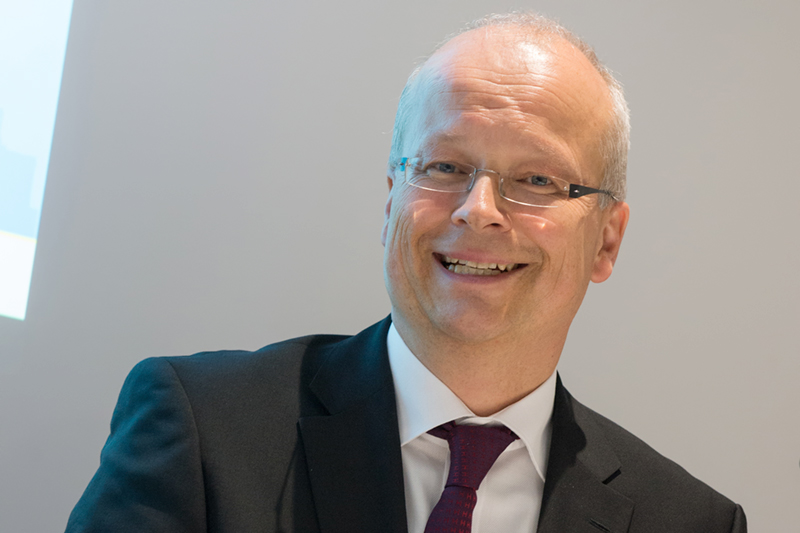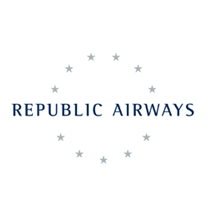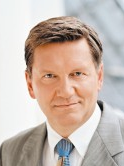Leeham News and Analysis
There's more to real news than a news release.
 Leeham News and Analysis
Leeham News and Analysis
- The Boeing 767 Cross Section, Part 1 November 24, 2022
- Movie Review: Devotion November 21, 2022
- China will accelerate development of its commercial aerospace sector November 21, 2022
- Bjorn’s Corner: Sustainable Air Transport. Part 46. eVTOL comparison with helicopter November 18, 2022
- The economics of a 787-9 and A330-900 at eight or nine abreast November 16, 2022
Bombardier snares Lufthansa’s Nico Buchholz
Bombardier scored a major executive coup with the appointment of Nico Buchholz as Chief of Procurement for the entire company.

Nico Buchholz, the new Head of Procurement for Bombardier. Photo via Google images.
Buchholz was Executive VP Group Fleet Management for Lufthansa Airlines and Group, with various fleet management titles, since 2001. He previously was an executive at Airbus.
Buchholz was the launch customer for the CSeries, placing an order in 2009 for 30+30 CS100s and CS300s. Lufthansa Group’s Swiss International Airlines subsidiary will become the first operator when the deliveries begin next year. While the Middle Eastern airlines get the headlines for being launch customers for the Boeing 777X, in fact it was Buchholz who bought the airplane for Lufthansa, which is the first 777-9 customer.
Buchholz is a major “get” for Bombardier.
Posted on September 8, 2015 by Scott Hamilton
Union leaders stall contract vote for Republic
Republic Airways Holdings appeared to resume its downward trajectory toward a potential bankruptcy when the leadership of its pilots union refused to put the  company’s last, best and final and final offer for a new pilot contract.
company’s last, best and final and final offer for a new pilot contract.
Republic subsidiaries provide regional airline service to American, Delta and United airlines.
Republic says pilot shortages caused it to reduce operations. Pay raised, benefits and working conditions have been at the heart of the protracted contract negotiations between the company and the Teamsters, which represents the pilots.
Republic previously restructured one of its smaller subsidiaries outside bankruptcy, but with pilot shortages and reduced revenue to support debt service, the situation is worse now than it was then.
Republic also has billions of dollars worth of aircraft orders, with nearly $2.7bn due next year. This includes the first of 40 Bombardier CS300s and a number of Embraer E-Jets.
Posted on September 1, 2015 by Scott Hamilton
PW chief credited MRJ with ripple effect leading to CSeries, A320neo, 737 MAX and E-Jet E2
David Hess, former president of Pratt & Whitney, credits Mitsubishi with the ripple effect that led to new developments at Bombardier, Airbus, Boeing and Embraer. Photo via Google images.
Aug. 20, 2015, © Leeham Co.: Conventional wisdom credits Bombardier’s CSeries with being the disruptor that prompted Airbus to launch the A320neo, which in turn caused Boeing to launch the 737 MAX and Embraer to launch its E-Jet E2.
But an academic paper by John Slattery, chief commercial officer for Embraer, reveals that David Hess, the former president of Pratt & Whitney, credits Mitsubishi rather than Bombardier as the catalyst for the dramatic changes that followed.
In a paper entitled Resources & Rivalry, A Case Study of The Single-Aisle Commercial Jet Manufacturing Industry, Slattery interview present and former executives of the Big Four airframe manufactures, the former CEO of ILFC and officials of P&W.
The paper provides a chronicle of thinking leading to decisions to move ahead with new airplane projects, including re-engining the A320 and 737 rather than proceeding with new, clean-sheet designs.
The interviews debunk some of the conventional wisdom surrounding the variety of programs. We’ll periodically report the findings of Slattery’s paper, starting with PW and Mitsubishi.
Posted on August 20, 2015 by Scott Hamilton
Pontifications: Storm warnings ahead
Aug. 17, 2015 (c) Leeham Co: Sometimes I never know what’s going to exercise readers. Sometimes it’s obvious. Last week it wasn’t.
Our post last week about the formidable challenges still facing Bombardier for the CSeries brought some surprising reaction, particularly on Twitter. And I didn’t see it coming.
The story was behind the paywall, but Canada’s National Post saw the public portion and called to get more information. The Post published some comments from an interview and with permission recreated a chart that was behind the paywall.
We’ve been doing risk assessments of “skyline” quality for a couple of years now, including Bombardier, which is why the reaction to last week’s post came as a surprise.
Our risk assessment has taken a couple of forms. For Bombardier, it’s a Green-Yellow-Red assessment, the meaning of which really doesn’t mean any explanation for anyone who drives a car or, in the aerospace industry, has ever seen Boeing’s Green-Yellow-Red assessment of access to aircraft financing it does every year.
The other symbolic method we use is nautical: Storm Warning Flags, looking at the top 10 narrow- and wide-body customers of Airbus and Boeing and raising a Storm Warning Flag about how solid the order is. We do this annually and the most recent time for Airbus and Boeing customers is here, also behind our paywall.
Posted on August 17, 2015 by Scott Hamilton
Bombardier reports lower 2Q2015 income
July 30, 2015: Bombardier reported lower net income on slightly higher revenues for the second quarter.
The press release is here. The earnings call presentation is here. Bombardier-Q2-2015-Presentation-20150730-en
“Overall, the second quarter was in line with plan in terms of revenues, EBIT and deliveries, and our liquidity stands at $4.4 billion,” said Alain Bellemare, President  and Chief Executive Officer. “After five months on the job, I have a better understanding of our challenges and opportunities. We are taking specific action, including the launch of our Bombardier transformation plan, a disciplined approach to cash management, and the strengthening of our leadership team to reshape the company and ensure our long-term success.”
and Chief Executive Officer. “After five months on the job, I have a better understanding of our challenges and opportunities. We are taking specific action, including the launch of our Bombardier transformation plan, a disciplined approach to cash management, and the strengthening of our leadership team to reshape the company and ensure our long-term success.”
Bombardier said it completed 2,000 of the 2,400 hours required for certification of the C Series, which will be delivered during the first half of 2016 to launch operator Swiss International.
During the earnings call, Bellemare outlined more details of the Transformation Plan designed to turn BBD around from its financial strains.
Posted on July 30, 2015 by Scott Hamilton
Pontifications: ExIm reform
July 6, 2015, © Leeham Co. The US ExIm Bank authorization expired last week. As readers know, I’m a strong advocate of renewal of the authorization. Boeing, and other companies, hope reauthorization can be achieved this month.
I won’t restate the reasons I think ExIm should be reauthorized, nor my utter disdain for the right-wing Republicans and Tea Party types who don’t get that the Bank helps Boeing sell airplanes and sustain or create jobs. I’ve written about this many times, and the competitive disadvantage Boeing will have vs Airbus, whose European Credit Agencies will take full advantage of this.
But there are some points on the “other side” to revisit.
Posted on July 6, 2015 by Scott Hamilton
CSeries performance improvement demystified
By Bjorn Fehrm
Subscription required
Introduction
July 6, 2015, © Leeham Co. Bombardier presented a slew of new data for their CSeries aircraft during Paris Air Show. Listening to Bombardier (BBD) officials it sounded like there was only positive news: increased range, better fuel economy, better field performance and lower per seat costs.
We have commented on the released information in two articles when at the Paris Air Show, “Bombardier makes it official: CSeries exceeds advertised numbers” and “CSeries range even better than Bombardier revealed.” We now follow up these articles with an analysis of the furnished figures to reveal how these improved performance figures were achieved.
Aircraft programs use sophisticated modeling tools to understand what performance a finished aircraft will have. A 10% range increase with standard payload from 2,950nm to 3,300nm does not come from any miscalculations with such tools. Nor does it come from claimed lower fuel consumption due to lower airframe drag alone.
There are other contributing factors. Using our proprietary model to identify the factors, we explain how BBD has achieved the claimed higher performance.
Summary:
- We analyze where the range increase come from and how it affects other performance parameters
- We also analyze where the improved per seat costs of the CSeries comes from. Lower aircraft costs or other factors?
- Finally we look at the promised future performance improvements and discuss where these are to find and if they are plausible.
Posted on July 6, 2015 by Bjorn Fehrm
Bjorn’s Corner: What Paris Air Show taught us about East and West.
25 June 2015, © Leeham Co: With a few days in the office one can look back at Paris Air Show with a bit of perspective. So what are the impressions?
It was surprising how many orders Airbus and Boeing landed. Both had played down the expectations, telling that it will be a decent show but nothing close to record. Yet both were booking orders or commitments which were better than expected going into the PAS. Read more
Posted on June 26, 2015 by Bjorn Fehrm
AirAsia, Bjorn's Corner, Boeing, Bombardier, Comac, CSeries, Farnborough Air Show, Future aircraft, GE Aviation, Irkut, Paris Air Show, Pratt & Whitney, Rolls-Royce, Sukhoi, United Aircraft, YAK
737 MAX, 787, A320NEO, A330neo, Airbus, Boeing, Bombardier, Comac, CSeries, GE, Pratt & Whitney, Rolls-Royce
Embraer CEO talks about risks
Subscription Required
Introduction

Embraer CEO Paulo Cesar Silva. Photo: AINOnline via Google Images.
June 22, 2015, Paris Air Show, © Leeham Co. Embraer has emerged as the#3 commercial aircraft producer over the years, behind Airbus and Boeing and overtaking Bombardier, by approaching risks carefully and conservatively. No other decision in recent years reflects this approach than what to do when events outside its control forced officials to decide what to do about the future of the E-Jet.
Bombardier launched the CSeries with a new design and a new engine. The larger of two models, the CS300, was a direct challenge to Airbus and Boeing and their smallest aircraft. Airbus responded with the New Engine Option family, forcing Boeing to react with the re-engined 737, the MAX.
With the smallest CSeries, the CS100, a competitor to the largest EJets, the E190 and E195, Embarer had to do something. The question was what.
Embraer could launch an entirely new, larger aircraft, following the Bombardier example. It could do a “simple” re-engine of the EJet. Or it could do something else.
Officials chose to stay away from confronting Airbus and Boeing with a CS-300-sized EJet. Instead, they drew the line at 133 seats in highest density, adding 12 seats to the E-195. The Pratt & Whitney GTF was chosen to power a fundamentally new airplane, one with new wings, new systems, aerodynamic upgrades and other improvements.
We met with CEO Paulo Cesar de Souza e Silva at the Paris Air Show to talk about EMB’s approach to global risk factors.
Summary
- Oil prices, over-ordering and over-expansion by airlines factor into Embraer’s market assessments.
- Airline focus on market share rather than profitability is bad decision-making.
- Asia is Embraer’s best opportunities today.
Posted on June 22, 2015 by Scott Hamilton
Bjorn’s Corner: Paris Air Show review
June 18, 2015, c Leeham Co: With the industrial part of Paris Air Show over (the public portion continues through the weekend), one can start to summarize impressions. I have over the years participated in around 10 Paris Air Shows or Farnborough International Air Shows. This was one of the first where one could see that people were stopping and looking up to observe the aircraft which were quiet.
Posted on June 18, 2015 by Bjorn Fehrm
Email Subscription
Twitter Updates
My TweetsAssociations
Aviation News-Commercial
Commentaries
Companies-Defense
Resources
YouTube
Archives
- November 2022
- October 2022
- September 2022
- August 2022
- July 2022
- June 2022
- May 2022
- April 2022
- March 2022
- February 2022
- January 2022
- December 2021
- November 2021
- October 2021
- September 2021
- August 2021
- July 2021
- June 2021
- May 2021
- April 2021
- March 2021
- February 2021
- January 2021
- December 2020
- November 2020
- October 2020
- September 2020
- August 2020
- July 2020
- June 2020
- May 2020
- April 2020
- March 2020
- February 2020
- January 2020
- December 2019
- November 2019
- October 2019
- September 2019
- August 2019
- July 2019
- June 2019
- May 2019
- April 2019
- March 2019
- February 2019
- January 2019
- December 2018
- November 2018
- October 2018
- September 2018
- August 2018
- July 2018
- June 2018
- May 2018
- April 2018
- March 2018
- February 2018
- January 2018
- December 2017
- November 2017
- October 2017
- September 2017
- August 2017
- July 2017
- June 2017
- May 2017
- April 2017
- March 2017
- February 2017
- January 2017
- December 2016
- November 2016
- October 2016
- September 2016
- August 2016
- July 2016
- June 2016
- May 2016
- April 2016
- March 2016
- February 2016
- January 2016
- December 2015
- November 2015
- October 2015
- September 2015
- August 2015
- July 2015
- June 2015
- May 2015
- April 2015
- March 2015
- February 2015
- January 2015
- December 2014
- November 2014
- October 2014
- September 2014
- August 2014
- July 2014
- June 2014
- May 2014
- April 2014
- March 2014
- February 2014
- January 2014
- December 2013
- November 2013
- October 2013
- September 2013
- August 2013
- July 2013
- June 2013
- May 2013
- April 2013
- March 2013
- February 2013
- January 2013
- December 2012
- November 2012
- October 2012
- September 2012
- August 2012
- July 2012
- June 2012
- May 2012
- April 2012
- March 2012
- February 2012
- January 2012
- December 2011
- November 2011
- October 2011
- September 2011
- August 2011
- July 2011
- June 2011
- May 2011
- April 2011
- March 2011
- February 2011
- January 2011
- December 2010
- November 2010
- October 2010
- September 2010
- August 2010
- July 2010
- June 2010
- May 2010
- April 2010
- March 2010
- February 2010
- January 2010
- December 2009
- November 2009
- October 2009
- September 2009
- August 2009
- July 2009
- June 2009
- May 2009
- April 2009
- March 2009
- February 2009
- January 2009
- December 2008
- November 2008
- October 2008
- September 2008
- August 2008
- July 2008
- June 2008
- May 2008
- April 2008
- March 2008
- February 2008



